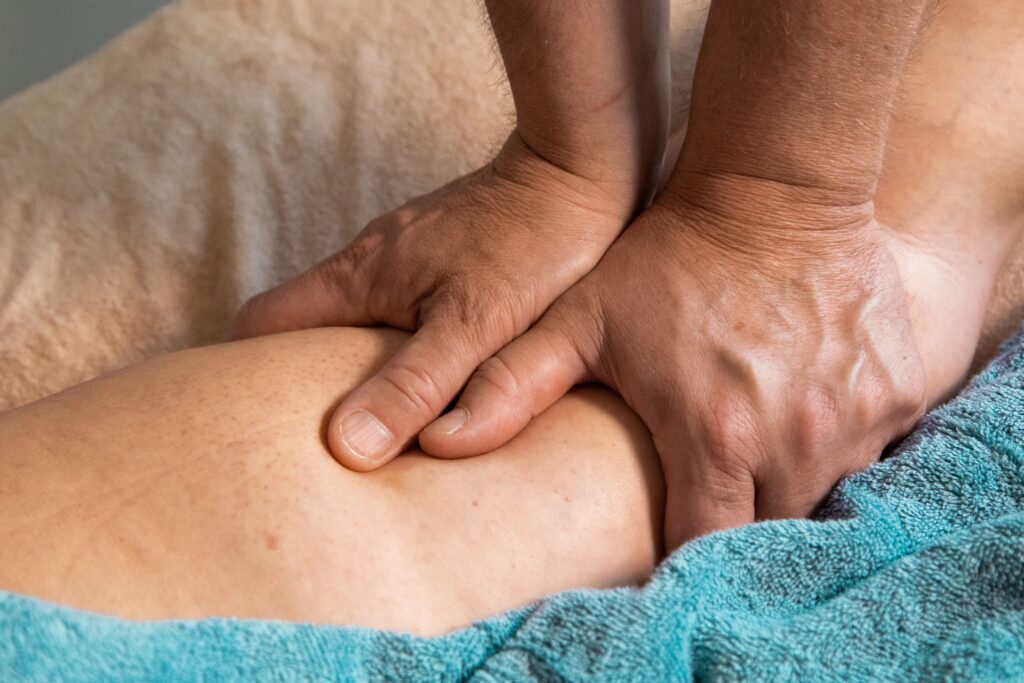After sitting for a long time, such as during a car or plane ride, one might find that your feet and legs feel heavy or swollen. This usually goes away after walking for a bit or elevating the feet.
Swelling or edema in the legs (manas) is often not a serious health threat, although if left untreated it can become painful and disabling.
Leg swelling is frequently due to a disorder in the veins. Veins are blood vessels that carry blood from all parts of the body back to the heart (unlike arteries that carry oxygenated blood from the heart to other parts of the body). The veins have valves inside them to help keep blood moving in only one direction toward the heart and as blood flows toward the heart the valves open and then close to keep the blood from flowing back.
When the valves are damaged or do not work well, this causes blood to backflow and collect in the legs leading to swelling. If the swelling goes away after elevating the feet, usually overnight it is usually not concerning. This is sometimes called dependent edema. If it persists this vein disease is called chronic venous insufficiency.

The chances of having vein disease can increase with:
- A blood clot in a leg vein (deep venous thrombosis)
- Leg injury
- Being pregnant, especially more than once — changes in hormone levels can weaken vein walls
- Obesity
Symptoms of vein disease can include:
- Pain or a feeling of tired or heavy legs, especially at the end of the day
- Swollen veins — “spider veins” which are small, fine veins and are usually flat, or “varicose veins” which are larger and twisted, and can appear rope-like under the skin
- Swelling in the lower legs or ankles, usually at the end of the day
- Skin color changes — brownish discoloration that often appears first around the ankle
- Open sores, also called “venous ulcers” — can occur after longstanding leg swelling, usually around the ankle and can be painful and ooze fluid

There are some things you can do to reduce leg swelling:
- Raise your legs up when you can, three or four times a day, for 30 minutes each time.
- Try not to sit or stand in one place for a long time. Get up to stretch and walk around for a few minutes.
- Do exercises to point your toes and feet down and up a few times each day.
- Maintain a healthy weight.
- Avoid scratching itchy skin above varicose veins, as this may cause bleeding or open wounds.
It is important that you do not take any medications to reduce the swelling unless instructed by your doctor. Indiscriminate use of medications such as diuretics may cause dehydration and kidney injury, as well as electrolyte imbalances that can cause an irregular heartbeat and cramps.
If other regular treatments do not work, there are procedures that can be done where the damaged veins are removed or destroyed so they can no longer fill with blood. These procedures include sclerotherapy, laser ablation, or surgical ligation.
You should also watch out for these warning signs, which can be signal of a more serious condition:
- Sudden onset of unexplained swelling
- Swelling in just one leg
- Swelling that does not go away in a few days
- Pain, redness or tenderness over the area of swelling, sometimes accompanied by fever
Being short of breath
Swelling that extends to the thighs, abdomen, arms, hands and face
See your doctor immediately if you experience any of these warning signs as your leg swelling may be due to a more serious condition — a heart or kidney problem, an infection, or a blood clot in a vein.
